Abstract
In the fall of 2003, the authors corresponded on the topic of private events on the listserv of the Verbal Behavior Special Interest Group. Extracts from that correspondence raised questions about the role of response amplitude in determining units of analysis, whether private events can be investigated directly, and whether covert behavior differs from other behavior except in amplitude. Most participants took a cautious stance, noting not only conceptual pitfalls and empirical difficulties in the study of private events, but doubting the value of interpretive exercises about them. Others argued that despite such obstacles, in domains where experimental analyses cannot be done, interpretation of private events in the light of laboratory principles is the best that science can offer. One participant suggested that the notion that private events can be behavioral in nature be abandoned entirely; as an alternative, the phenomena should be reinterpreted only as physiological events.
Full text
PDF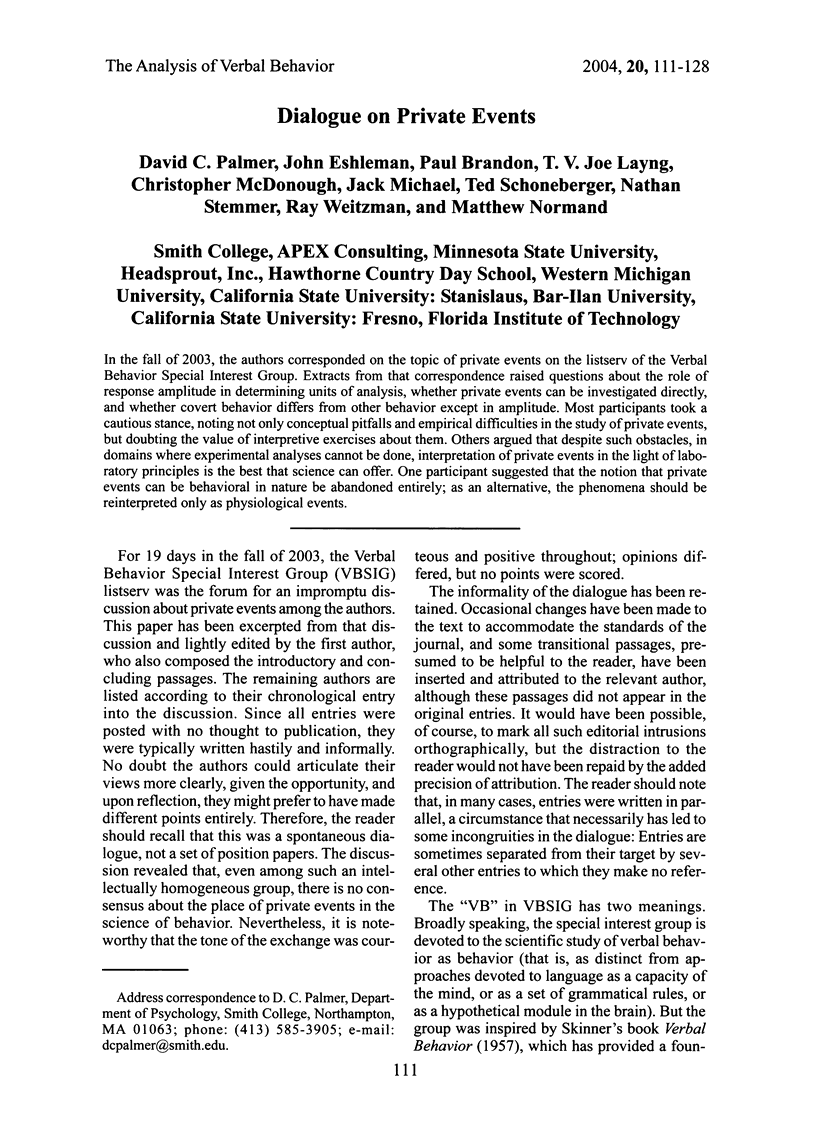
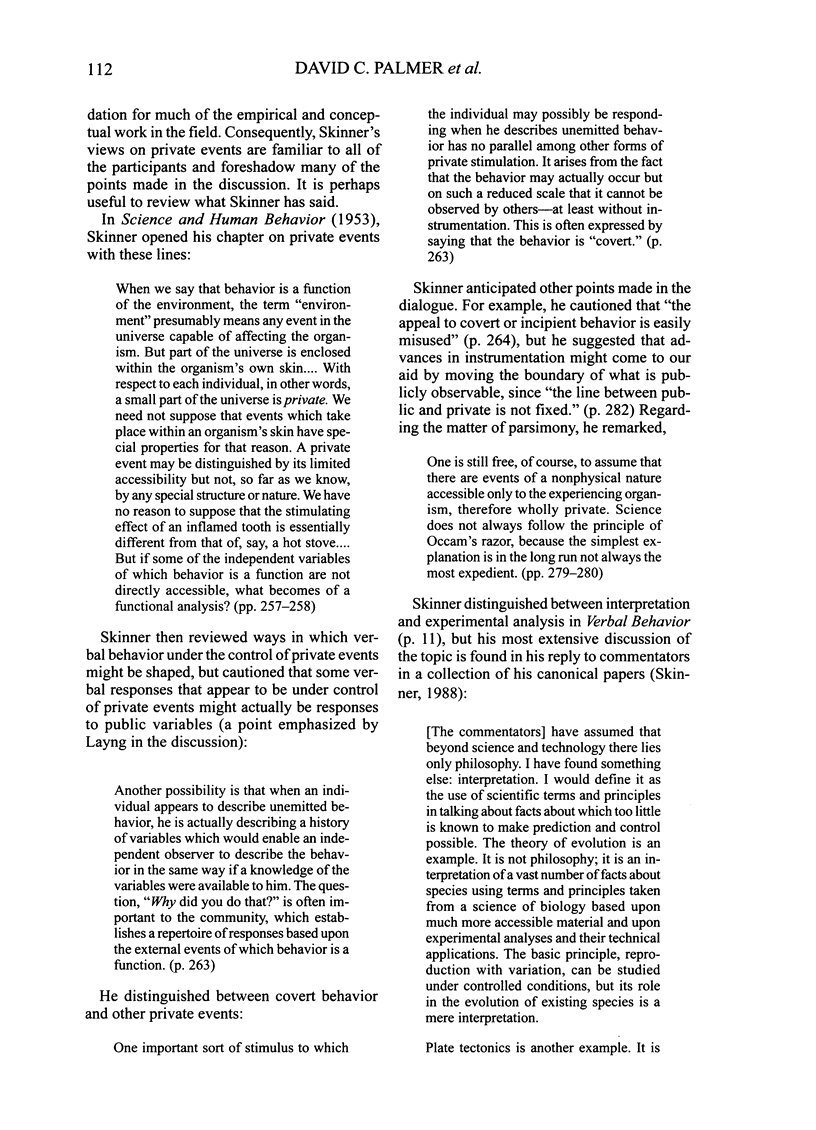
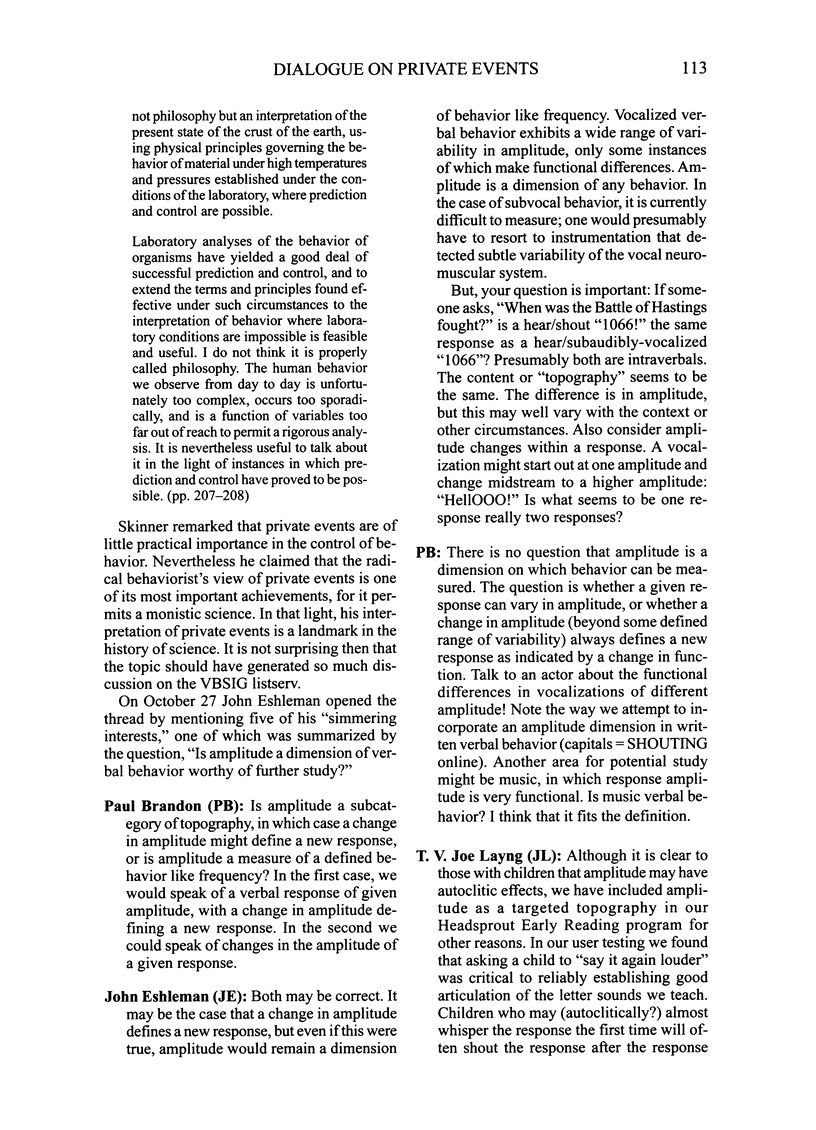
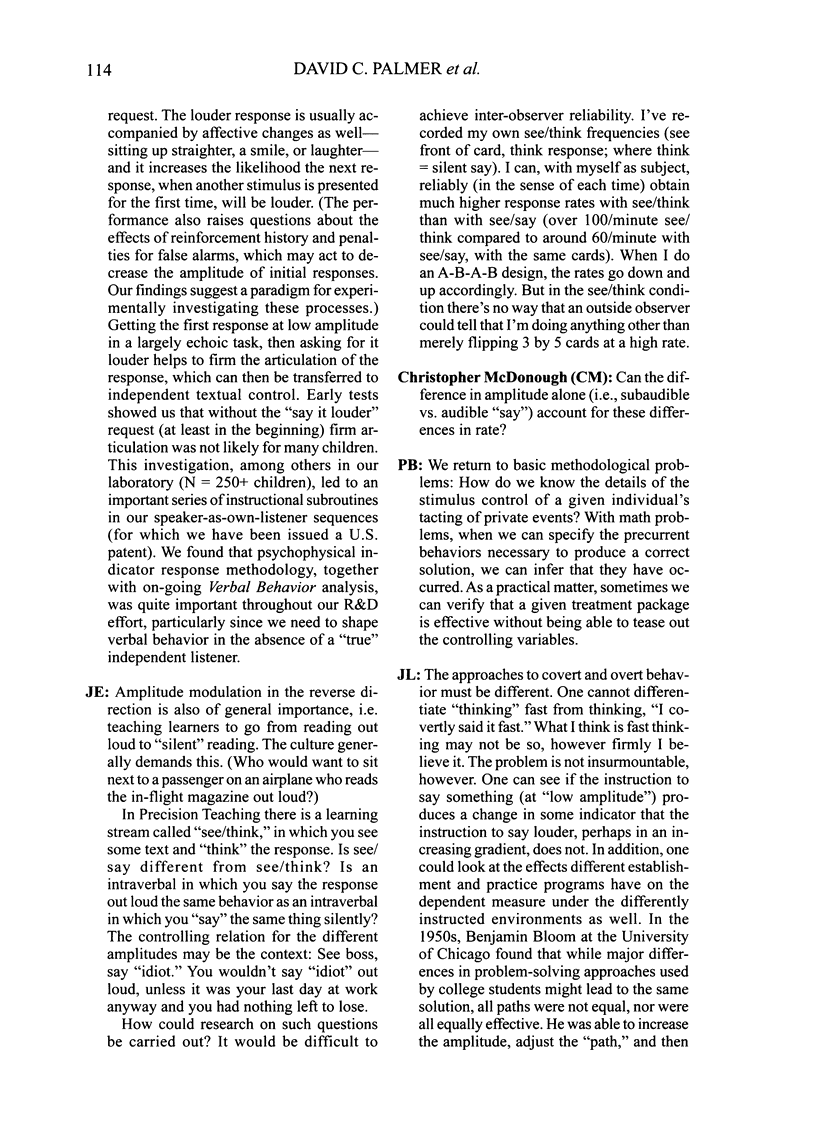
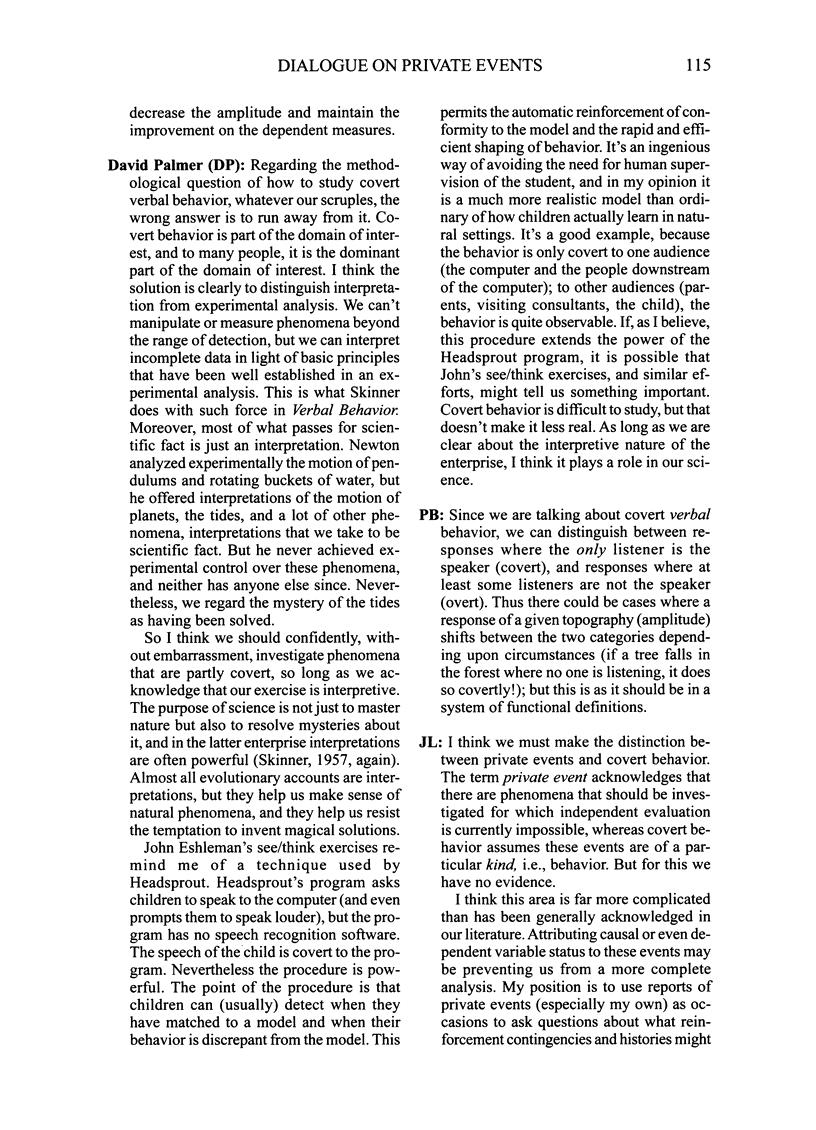
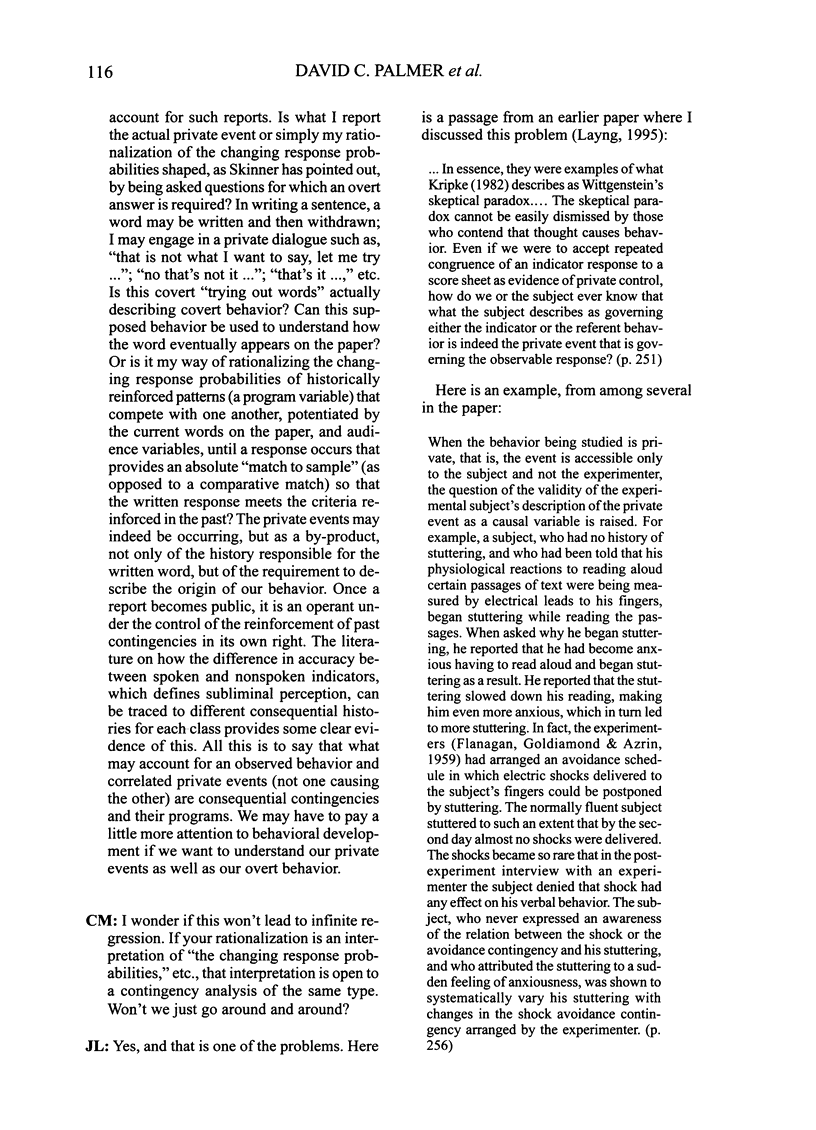
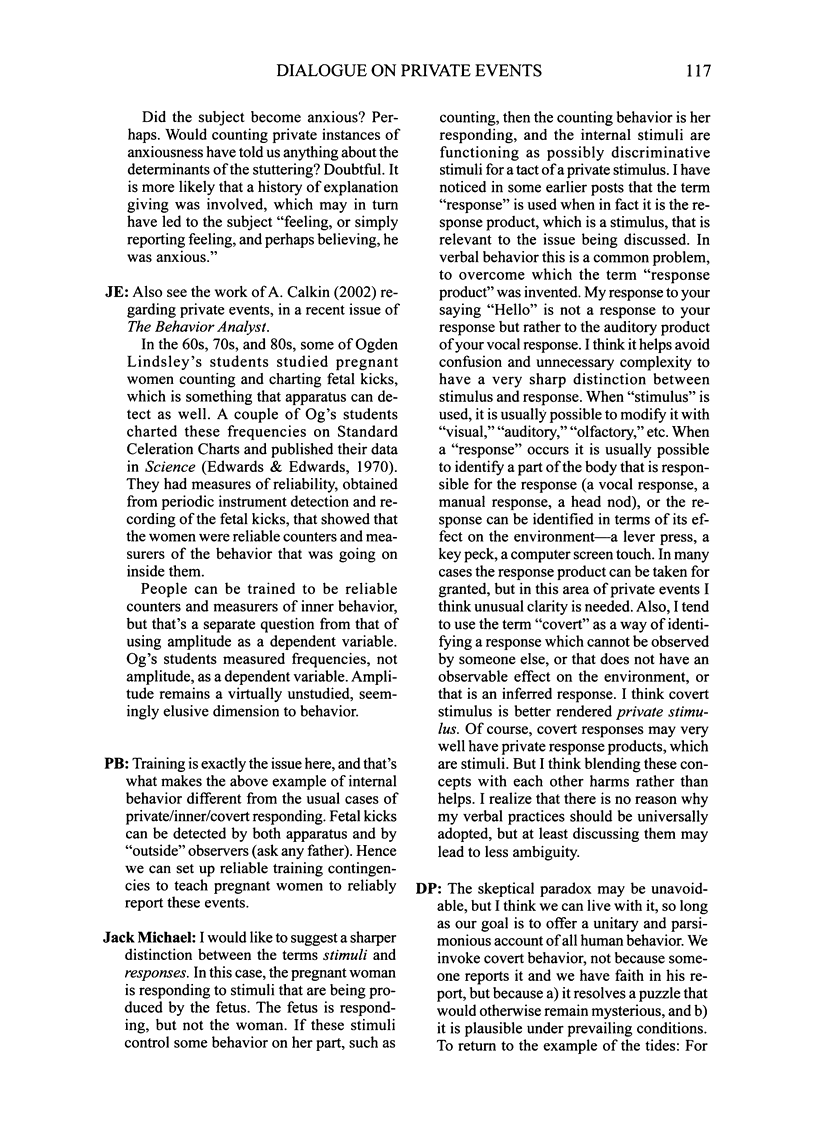
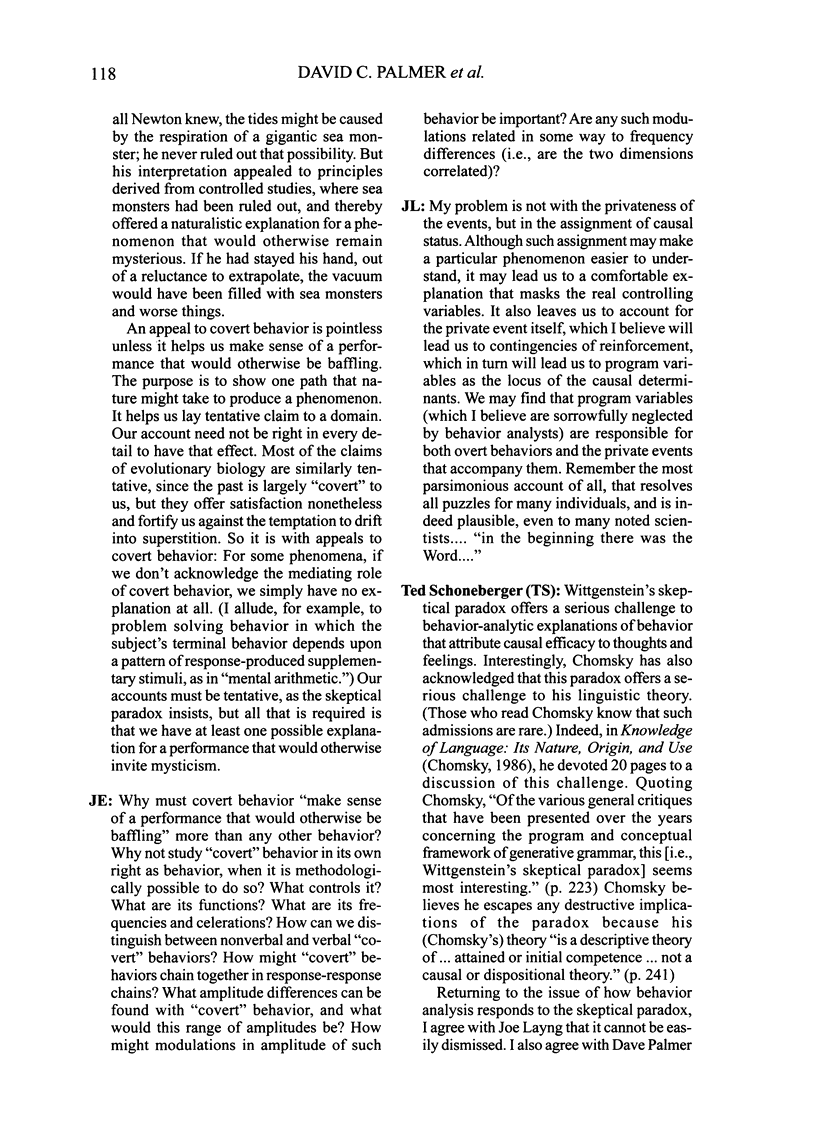
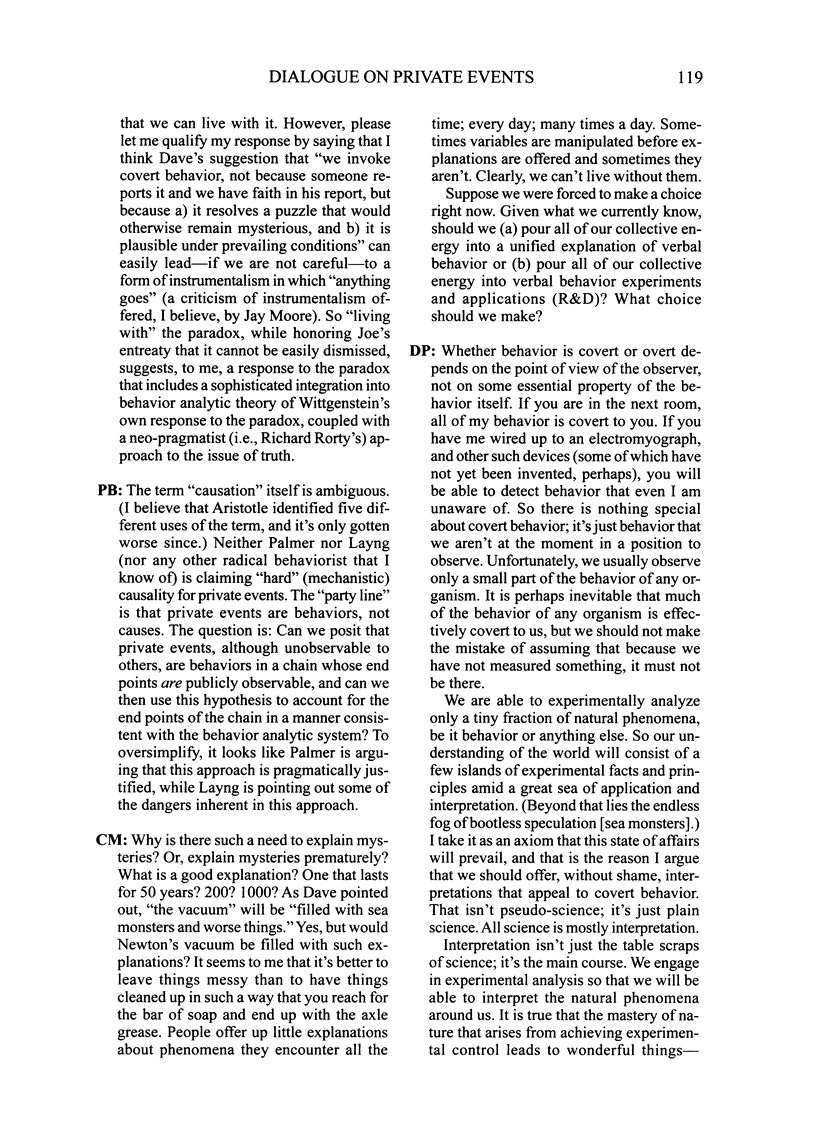
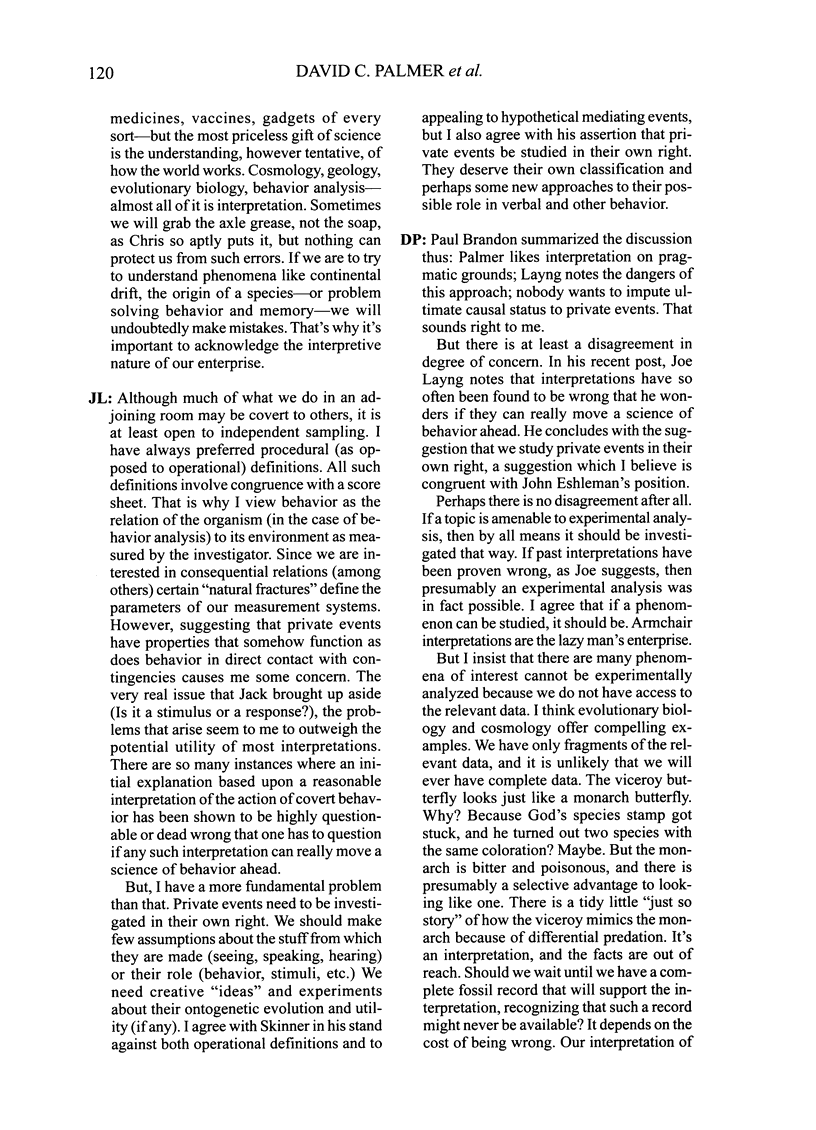
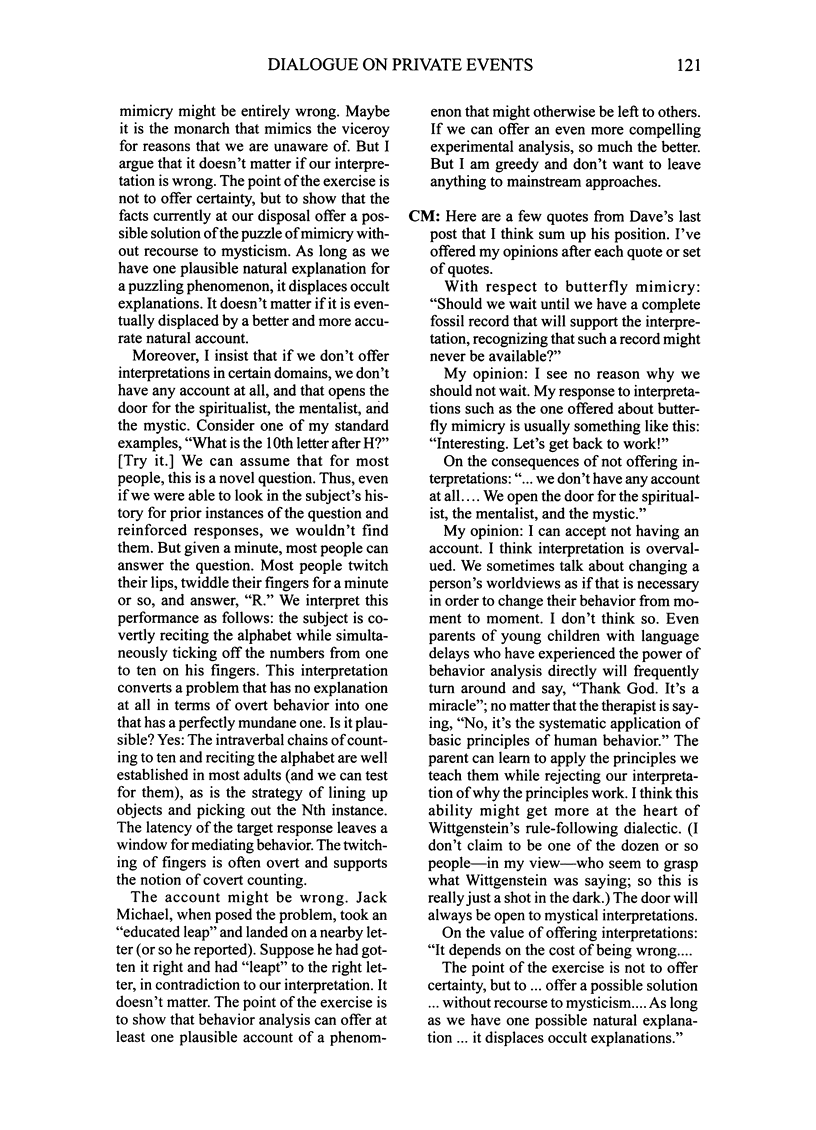
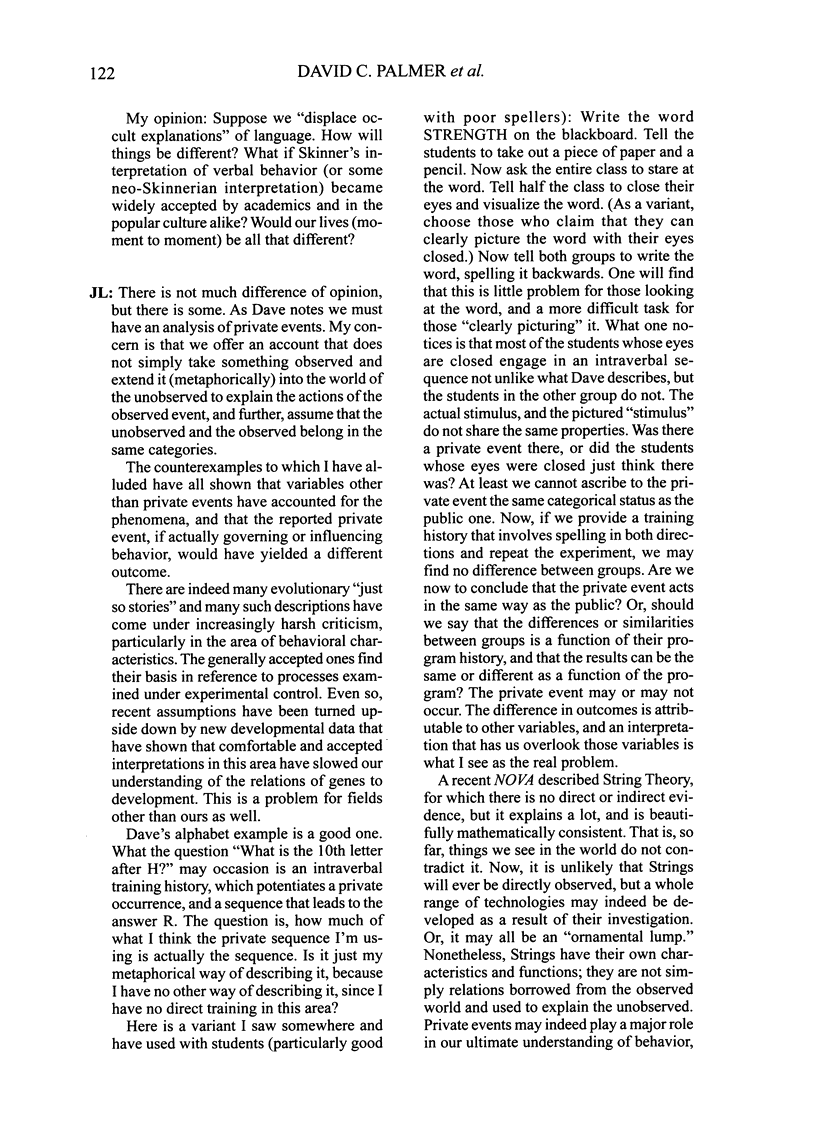

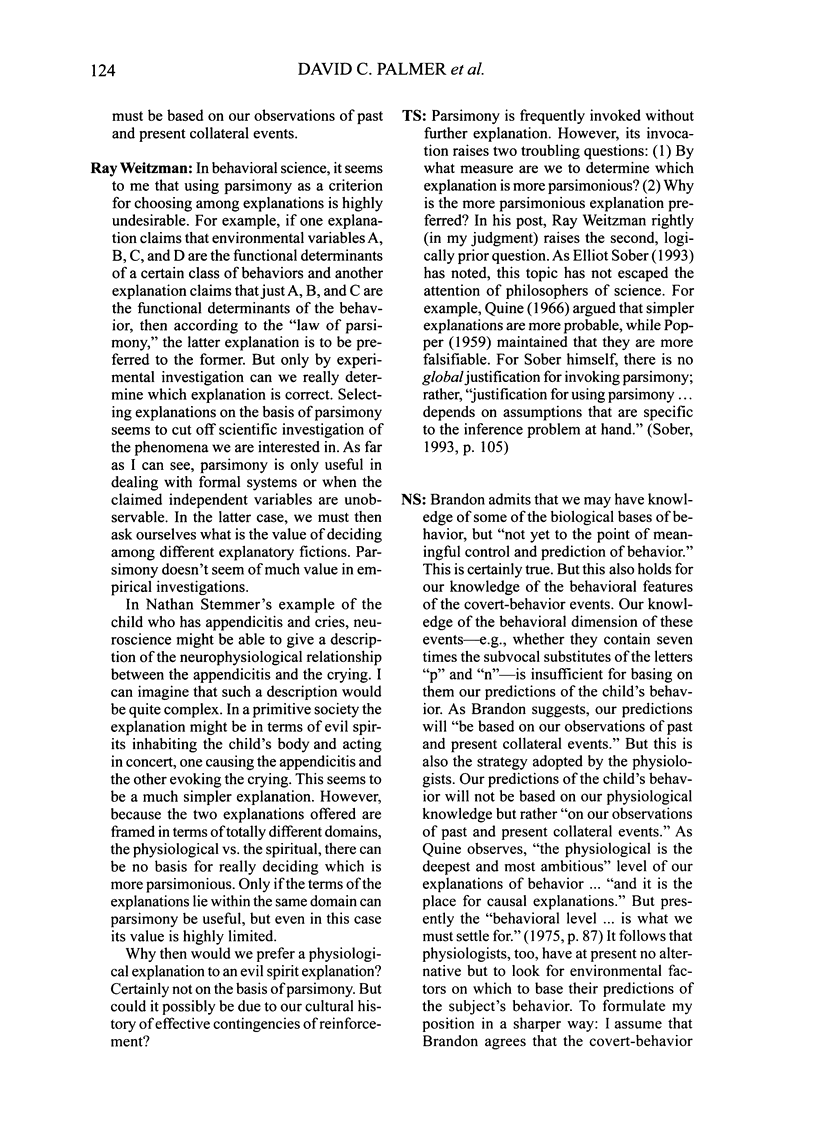
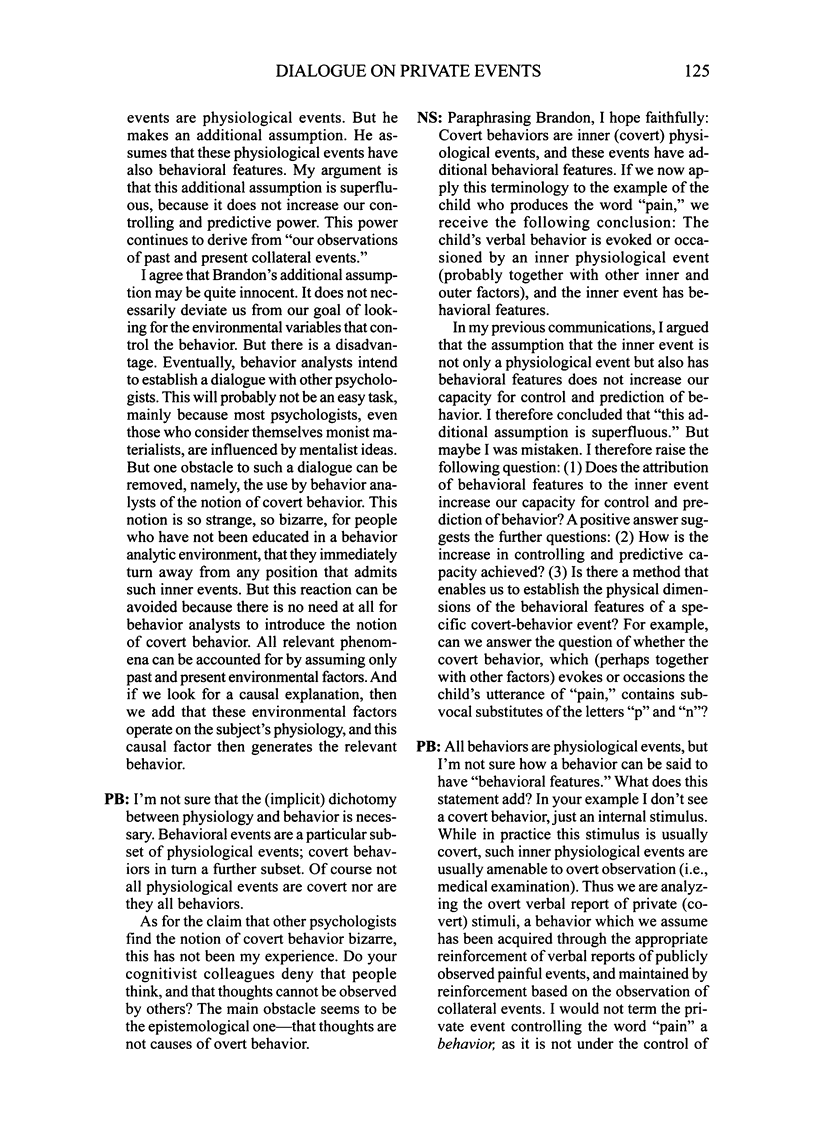
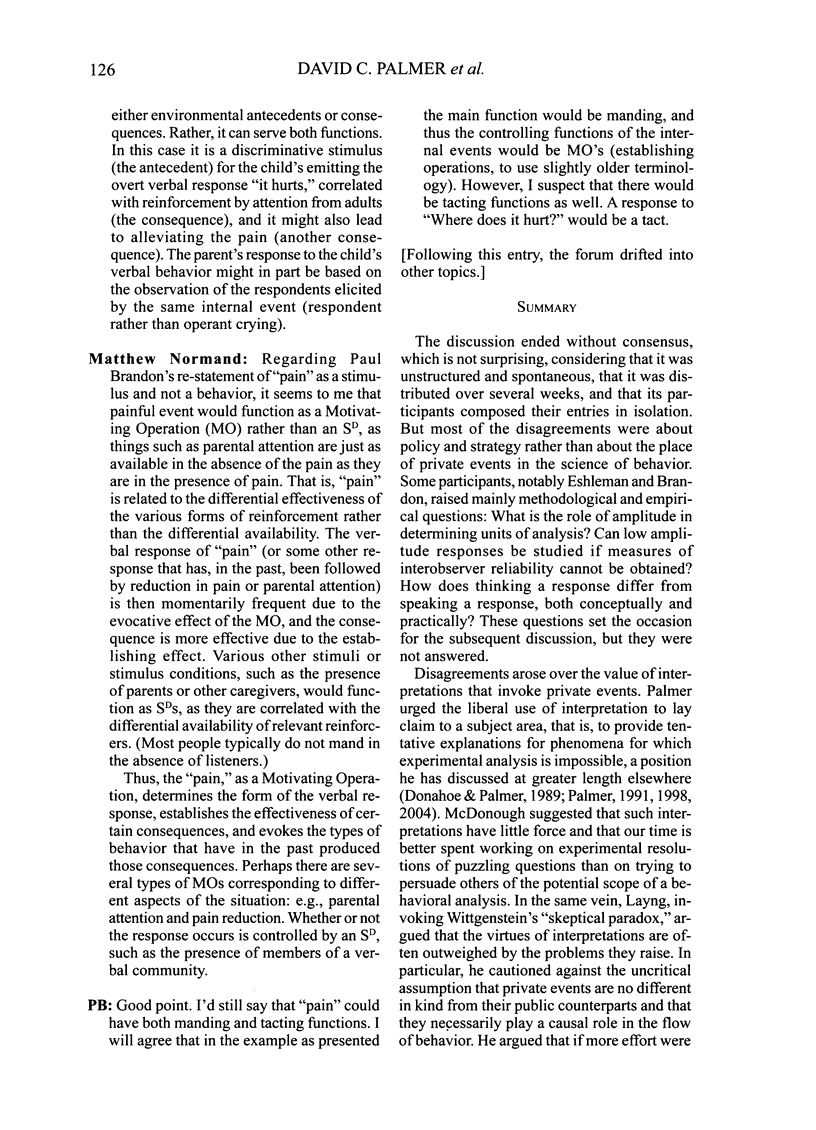
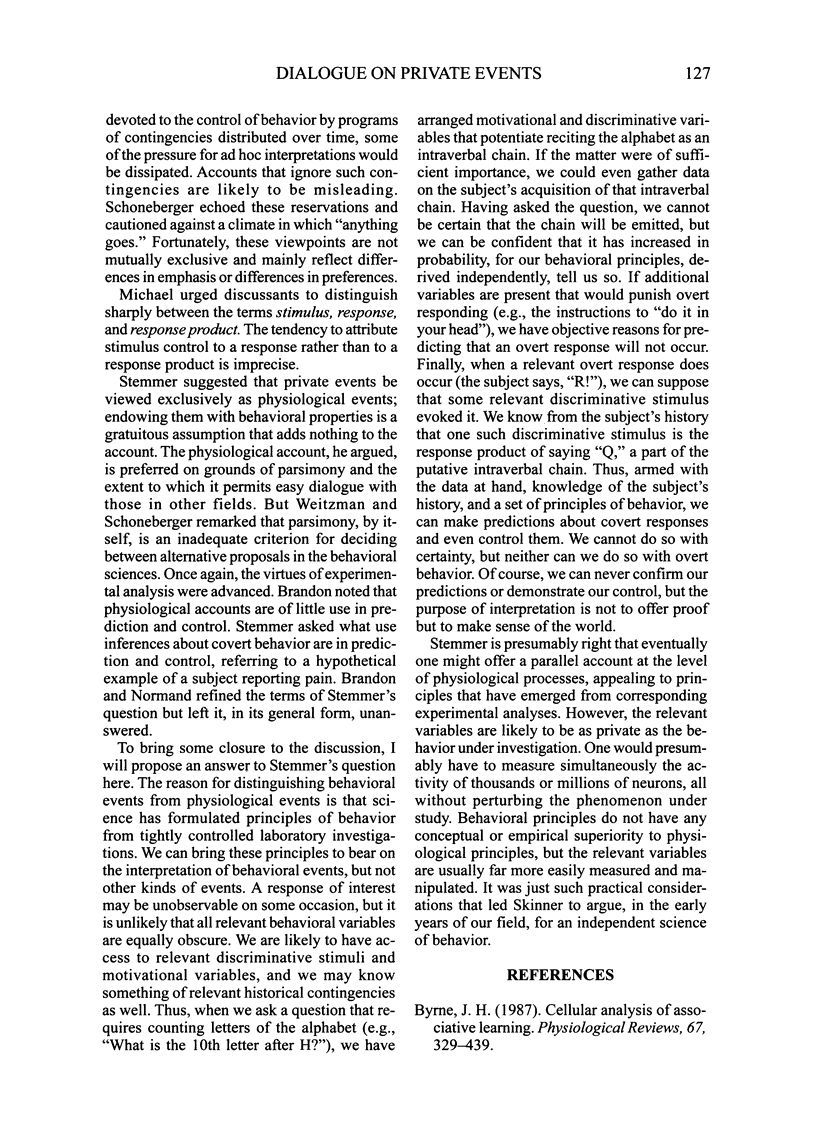
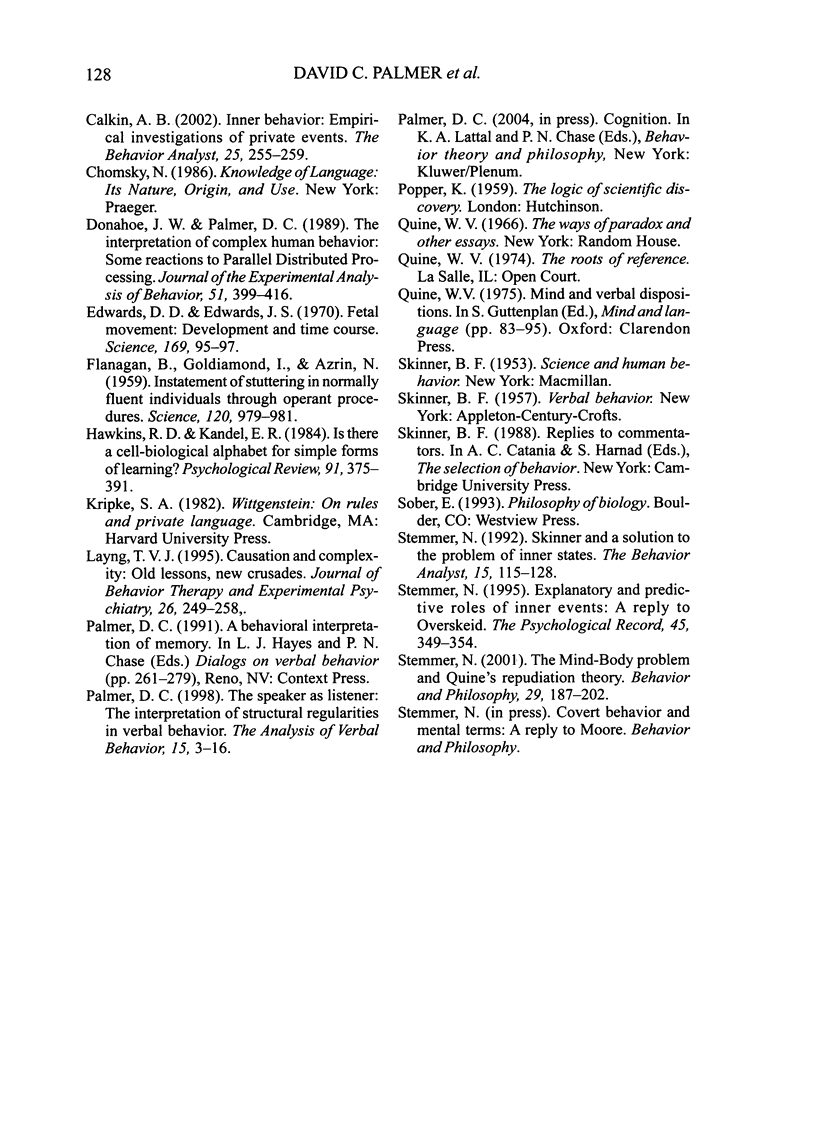
Selected References
These references are in PubMed. This may not be the complete list of references from this article.
- Byrne J. H. Cellular analysis of associative learning. Physiol Rev. 1987 Apr;67(2):329–439. doi: 10.1152/physrev.1987.67.2.329. [DOI] [PubMed] [Google Scholar]
- Calkin Abigail B. Inner behavior: Empirical investigations of private events. Behav Anal. 2002 Fall;25(2):255–259. doi: 10.1007/BF03392063. [DOI] [PMC free article] [PubMed] [Google Scholar]
- Edwards D. D., Edwards J. S. Fetal movement: development and time course. Science. 1970 Jul 3;169(3940):95–97. doi: 10.1126/science.169.3940.95. [DOI] [PubMed] [Google Scholar]
- FLANAGAN B., GOLDIAMOND I., AZRIN N. H. Instatement of stuttering in normally fluent individuals through operant procedures. Science. 1959 Oct 16;130(3381):979–980. doi: 10.1126/science.130.3381.979-a. [DOI] [PubMed] [Google Scholar]
- Hawkins R. D., Kandel E. R. Is there a cell-biological alphabet for simple forms of learning? Psychol Rev. 1984 Jul;91(3):375–391. [PubMed] [Google Scholar]
- Layng T. V. Causation and complexity: old lessons, new crusades. J Behav Ther Exp Psychiatry. 1995 Sep;26(3):249–258. doi: 10.1016/0005-7916(95)00025-u. [DOI] [PubMed] [Google Scholar]
- doi: 10.1901/jeab.1989.51-399. [DOI] [PMC free article] [Google Scholar]
- Stemmer N. Skinner and a solution to the problem of inner events. Behav Anal. 1992 Fall;15(2):115–128. doi: 10.1007/BF03392594. [DOI] [PMC free article] [PubMed] [Google Scholar]


